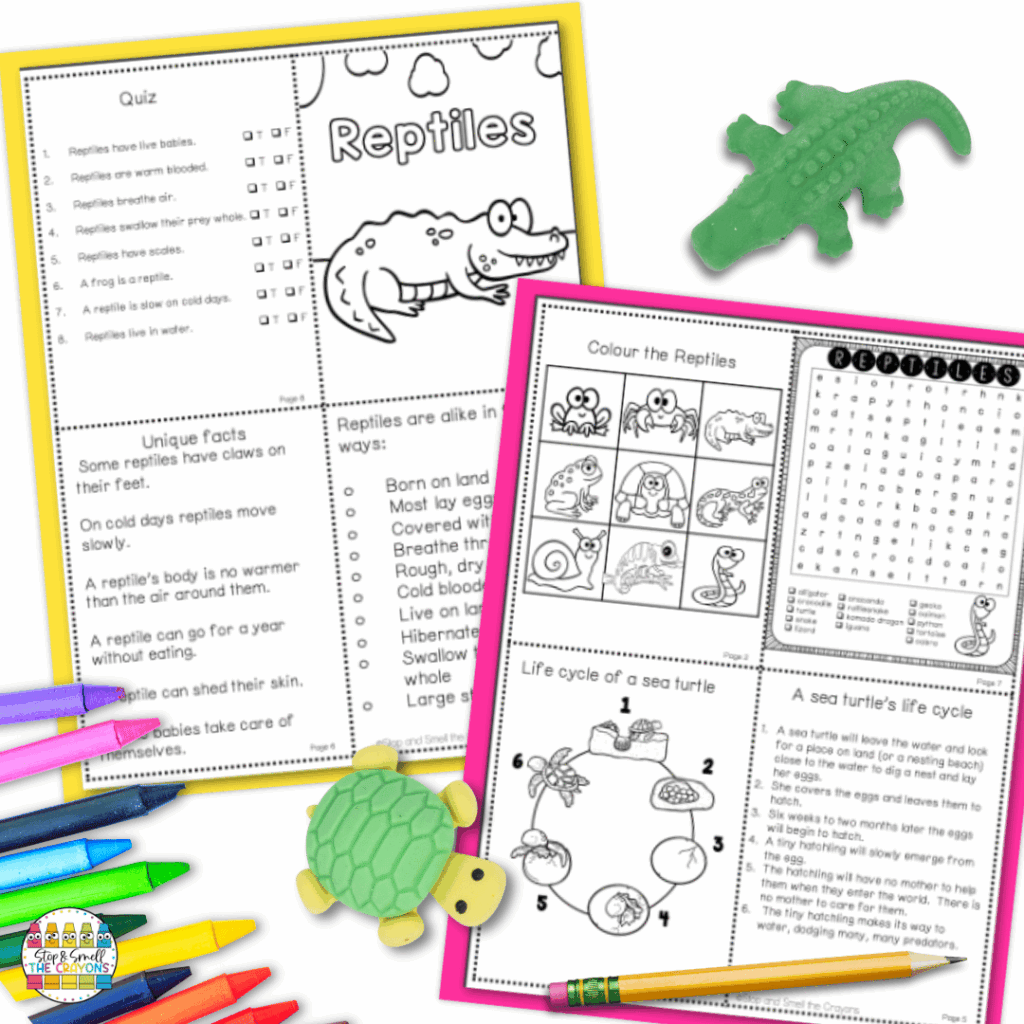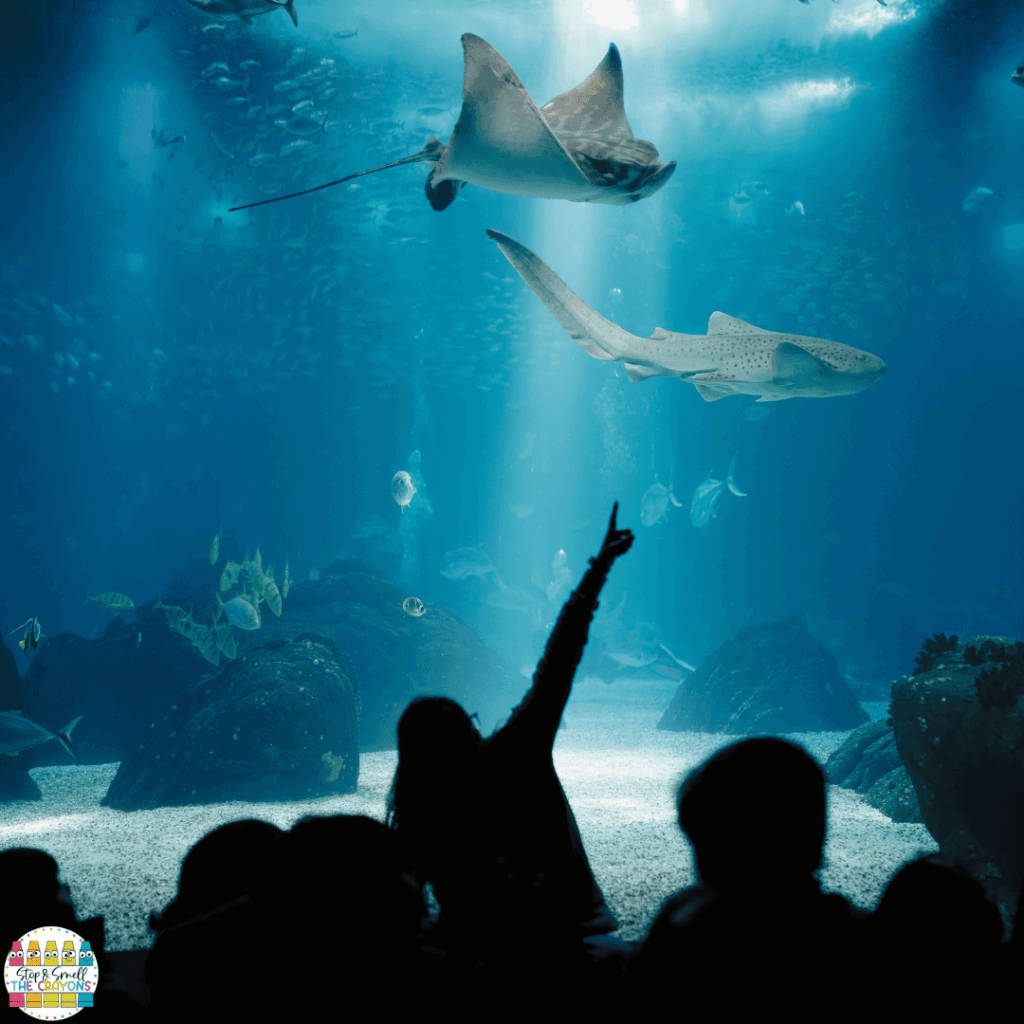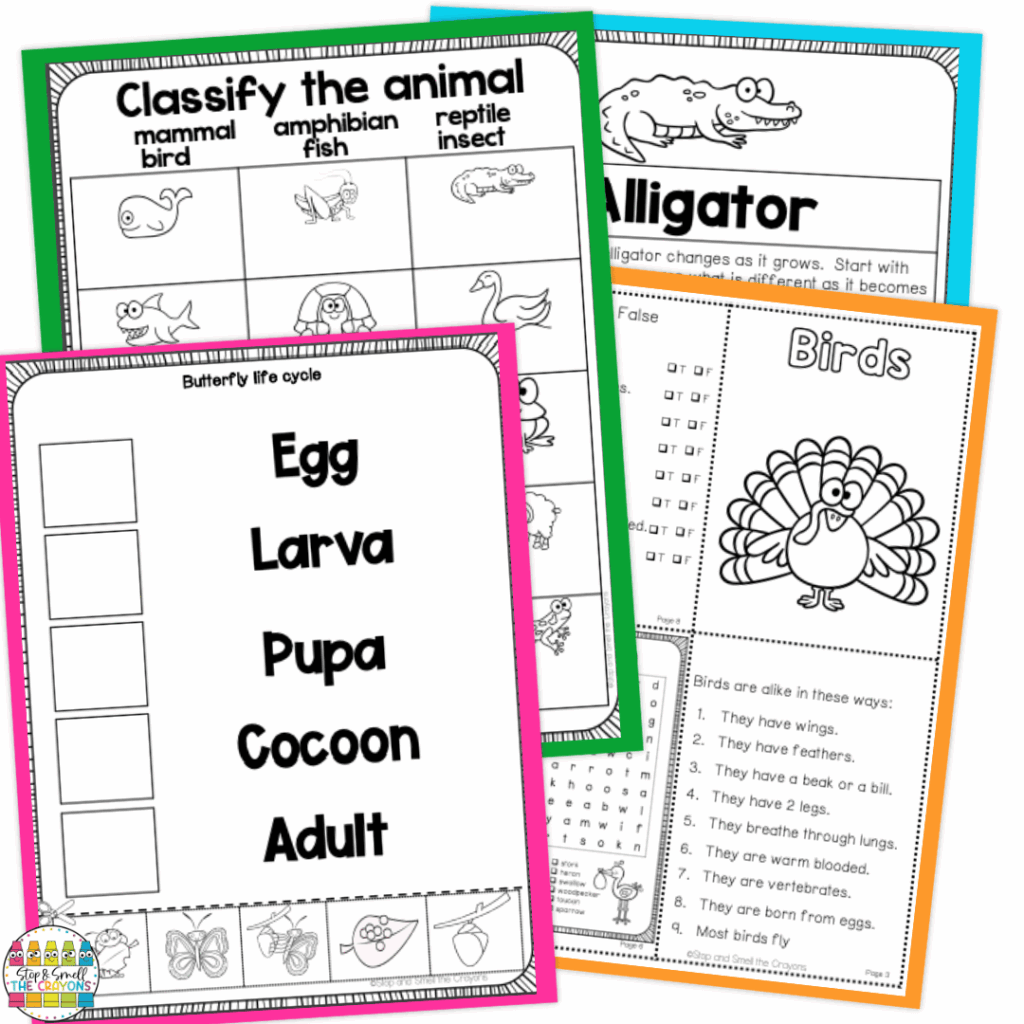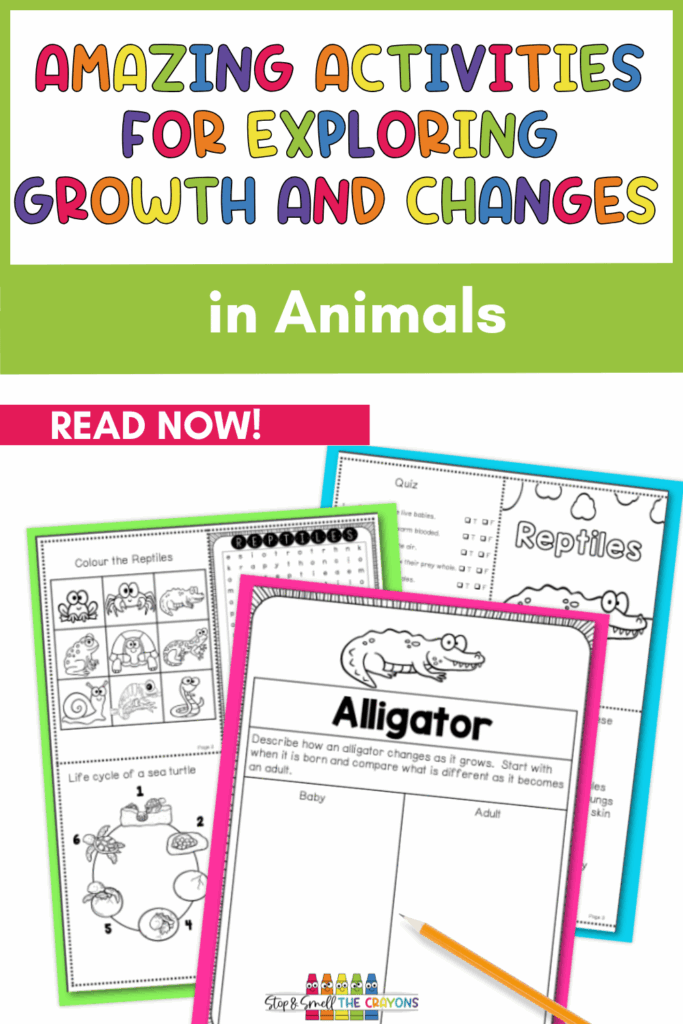Learning about animals is always a classroom favorite. When we go beyond naming pets and zoo creatures and start digging into growth and changes in animals, something magical happens. This unit is all about helping our students explore the fascinating world of animal life cycles, characteristics, habitats, adaptations, and more. From sorting plastic animals to researching how real creatures survive in their environments, this unit taps into your students’ natural curiosity and turns it into meaningful learning.

I love how this growth and changes in animals unit encourages our kiddos to ask questions, make predictions, and observe closely. It’s not just about remembering facts. It’s about thinking like a scientist. Whether they’re figuring out which animals go through metamorphosis or writing riddles about animal adaptations, every activity builds a deeper understanding of the animal kingdom. Let’s break down the engaging and easy-to-implement activities that bring the growth and changes in animals unit to life in the classroom!
Sorting and Classifying: Kicking Off Growth and Changes in Animals
To launch the growth and changes in animals unit, I start with a class meeting and a big bucket of plastic animals. It’s amazing what our kiddos will do when we just give them time and space to sort! I make sure to include animals from each of the six classes: mammals, reptiles, amphibians, fish, birds, and insects. Then, I ask my students to sort the animals any way they want and explain their rules. What always follows is a rich discussion full of discoveries.

When my students start discussing, they explain how they sorted the animals by fur, feathers, habitat, number of legs, or what they eat. I guide them toward recognizing key characteristics. Next, we build a class anchor chart together. We note traits like body coverings, teeth vs. beaks, where animals live, and how they move. This becomes the springboard for introducing the six animal classes.
Once the sorting is done and the chart is up, I project the “Discovering Classes of Animals” worksheet. We complete this as a group. It helps us make a smooth transition into diving deeper into each class of animals, one lesson at a time. It is the perfect way to review vocabulary that students are familiar with and add to it. It’s also a great way for students to observe and describe animals by their traits.
Exploring Animal Groups
After introducing the big idea of growth and changes in animals with our sorting activity and anchor chart, we spend time exploring the six major animal groups: mammals, birds, fish, reptiles, amphibians, and insects. Instead of rushing through them, we focus on one group at a time. This allows us to really dive into learning about the characteristics of each animal group, and it gives my students plenty of chances to compare, reflect, and build their science vocabulary.
Introducing Animal Groups
For each group, we kick things off with a short, age-appropriate YouTube video. These videos are a fantastic way to introduce the animal class in a visual, student-friendly way. They help spark curiosity and give our students a clear overview of each animal group before we dive into hands-on learning.

There’s no shortage of animal videos available on the internet. Over the years, I have found some that have become my go-to for these lessons. These are some of my favorites:
- All About Mammals
- What is a Bird?
- What is a Fish?
- What is a Reptile?
- What are Amphibians?
- All About Insects
This video introduction not only provides a content overview, but it is a great way to engage students and get them excited about what is to come.
Animal Group Mini Books
After the video, we use a mini-book specific to that animal group to dive deeper into our learning. Each mini-book includes facts about the animal group, true-or-false questions, vocabulary labeling, short writing prompts, and diagrams that walk us through the group’s key traits and life cycle. Whether we’re learning about a sea turtle’s life cycle during our reptile study or the transformation of a tadpole into a frog during amphibians, each featured animal gives our students a concrete example to connect with.

Since our focus in this unit is on how animals grow and change, we spend time comparing baby and adult animals using side-by-side visuals and writing activities. These pages help our kiddos identify which traits stay the same and which change over time. Some are surprised to learn that fish never receive help from their parents. Others love discovering that mammal babies drink their mother’s milk.
The repeated structure gives our students confidence and predictability as we work through each animal group. They know what to expect and can focus more deeply on the content, especially the new science vocabulary they are exposed to, like cold-blooded, metamorphosis, and vertebrate.
By the end of our animal group study, my students are confidently classifying animals, explaining life cycles, and using science terms like pros. They do all of this while staying excited and engaged.
Life Cycles Review in the Growth and Changes in Animals Unit
Once we’ve studied all six animal classes, we circle back to review life cycles. Life cycles are a key focus throughout the growth and changes in animals unit. This is where our students start to see patterns and differences between the way animals grow, change, and survive.

One of the things we focus on in this unit is how life cycles are similar and different. Students are quick to understand that all animals grow and change, but not necessarily in the same way. I love using colorful anchor charts to help them visualize the life cycle as we talk about it.
Another favorite activity is ordering life cycle picture cards from egg or birth to adulthood. It’s a simple but powerful way to reinforce sequencing and vocabulary like egg, larva, pupa, adult, or baby, juvenile, adult. These activities give our students strong scientific communication skills by using drawings, labels, and full sentences.
We finish up talking about life cycles by giving each student a chance to draw and explain the life cycle of any animal they choose. Students choose an animal and explain the growth process in their own words. Some choose butterflies and detail each stage of metamorphosis. Others focus on mammals like rabbits and highlight how they grow but look similar to their parents. It’s a great way to assess their overall understanding of life cycles and how they apply to animals. Plus. . . it is an activity that easily differentiates itself. Students who are confident often dive into a new animal to explore, while others can complete the activity using what they have previously learned.
Understanding Adaptations in the Growth and Changes in Animals Unit
After exploring life cycles, we shift into a meaningful conversation about adaptations. Adaptations are how animals survive in their environments. This part of the growth and changes in animals unit focuses on how different creatures meet their needs in often surprising ways.

We start with a class discussion around basic needs: food, water, air, shelter, and warmth. Then, my students each get an animal card and brainstorm what that animal needs to survive. The next challenge? Figuring out how that animal meets those needs. This leads us right into the concept of adaptations.
Students complete a fun worksheet where they draw their animal and describe its physical or behavioral adaptation. Maybe a turtle has a shell for protection, or a chameleon changes color to hide. We also explore features like webbed feet, sharp claws, long necks, camouflage, and scent glands, giving plenty of real examples that make this concept stick.
I love how these lessons encourage my students to look at animals with new eyes. They can notice details like a polar bear’s padded paws or an otter’s ability to sleep while floating. Each adaptation is another clue about how animals are perfectly suited to their habitats and lifestyles!
Much More to Explore When Exploring Growth and Changes in Animals

It seems like we have already covered so much when it comes to animals. But this is just the beginning. This unit also dives into many other topics. From identifying the needs of animals and how they meet those needs, to exploring how animals respond to seasonal changes. Students explore just what it takes to be an animal in the wild throughout the year. You can’t talk about animals without spending a little time talking about animal habitats. I love doing this after exploring what animals need because students realize just how important the habitat is to helping meet those needs.
During this unit, I also like to talk about how human activity affects animals. We dive into helpful and harmful activities and learn about the vast impact we have on animals and their habitats. Throughout the unit, I like to add in some unexpected topics that really tend to get the kids excited. They love learning about endangered and extinct animals, and just how many animals this includes. But one of the favorite topics is on imprinting and how a baby animal identifies its mother.
Culminating Projects to Wrap Up the Unit
To celebrate all we’ve learned in our growth and changes in animals unit, we finish with some amazing projects that give our students a chance to showcase their knowledge creatively. Since this includes multiple projects to choose from, you can pick and choose what you like, or use them throughout the unit instead of waiting until the end.

One of our favorites is the “If I could have a mammal for a pet” writing activity. It’s such a fun way for students to pull together everything they have learned about animals. They have so much excitement thinking about their new pet that they don’t ever realize all the science topics they are writing about.
The lift-the-flap “Animal Riddle Poster Project” is another favorite, year after year. Students choose an animal and complete a riddle worksheet that describes where it lives, how it moves, what it eats, and how it protects itself. Then they draw the animal on a separate page. We staple the riddle over the drawing so classmates can guess the animal before lifting the flap. It’s always a hit and makes for a great bulletin board display!
Another fun option is the “Animal Report Project.” After modeling how to research and organize facts, our students pick an animal. Then, they answer guided questions about its appearance, habitat, life cycle, adaptations, whether it’s a predator or prey, and if it’s endangered. This is where their science vocabulary really shines. They get an opportunity to connect writing with science. It’s a great cross-curricular project to tie in research and writing skills with your science unit.
Make Learning Memorable with Real-Life Examples
While the worksheets and mini-books give our students a solid foundation in science content, hands-on experiences make the growth and changes in animals unit unforgettable. Giving our students a chance to observe real animals, up close or even virtually, helps everything click into place. These activities invite curiosity, spark questions, and let our kiddos act like scientists as they investigate the living world. I like to incorporate hands-on learning opportunities throughout the unit. Some of these will take advance planning, so make sure to decide on those early so you can get everything into place.

You can’t go wrong with a field trip, but the zoo isn’t the only option. While the zoo is always a great place to learn about many animal groups in one setting, there are other options, too. Do you have a wildlife park or aquarium nearby? What about a state park where you could learn about animals native to your area? Local rescue organizations or farms also make a great field trip opportunity. And. . . if going to the animals isn’t an option, think about bringing the animals or their caretakers to you!
Another fun way to deepen the learning is to invite a guest speaker. Reach out to a local zoologist, animal shelter educator, park ranger, or wildlife expert to talk to your class. These experts will talk about animal traits, care, and survival. Some even bring real animals or samples of feathers, fur, antlers, and more! It’s a great way for our students to hear from someone who works with animals every day. It often inspires a whole new round of questions and connections.
One of my favorite experiences is raising live animals in the classroom. If you have the option, consider setting up a small butterfly habitat, raising ladybugs, or adding a tadpole tank to your classroom. Watching a caterpillar spin a chrysalis or a tadpole slowly grow legs makes life cycles real. Our students get to see metamorphosis happen right in front of them. The level of engagement is off the charts. The addition of a class pet is another fun way for students to learn more about animals, their needs, and what it means to be a caretaker. If live animals aren’t an option, even time-lapse videos of these processes or virtual science cams from zoos and aquariums can bring the experience to life.
Cross-Curricular Connections
One of the things I love about the growth and changes in animals unit is how easy it is to connect to other subject areas, especially reading, writing, and communication. Throughout the unit, our students aren’t just learning science facts. They’re building important literacy skills, too.
During our lessons, kiddos complete short response questions about animal traits, label scientific diagrams, and write out descriptions of life cycles. This helps them practice organizing ideas and using content vocabulary in context. The animal mini-books encourage independent reading, tracing, and matching while building fluency and comprehension around nonfiction topics.

Our culminating projects also tie directly into writing standards. The animal report project guides our students through organizing facts into structured answers about appearance, habitat, adaptations, and more. Meanwhile, the animal riddle posters let students practice descriptive writing with just the right amount of mystery to keep it fun and engaging for classmates.
Even classroom discussions play a role. As our students compare baby and adult animals or explain how certain adaptations help with survival, they’re building oral communication skills. They’re also learning how to express scientific thinking clearly.
By including these language-based activities, the growth and changes in the animal unit become more than a science experience. It’s a meaningful opportunity to support student growth across multiple subjects.
Teach Growth and Changes in Animals With Wonder and Confidence

Teaching growth and changes in animals is about so much more than learning facts about birds or mammals. It’s about helping our students see patterns, notice differences, and develop empathy for the living world. By the end of this unit, your students will have explored life cycles, adaptations, seasonal changes, and habitats through a wide range of interactive activities. They’ll walk away with a stronger science vocabulary and a deeper understanding of how animals grow, change, and survive. More importantly, they’ll start to see themselves as scientists who are curious, thoughtful, and full of wonder.
If you’re ready to make science meaningful and memorable this year, the Growth and Changes in Animals unit is a great place to start. Your students will love it. You’ll love how engaged and excited they are to learn.
Building on Growth and Changes in Animals With a Year of Science Exploration
The growth and changes in animals unit is just one part of the bigger picture in our science classroom. If you’re looking for a full year of engaging, hands-on science instruction, my Second Grade Science: A Year of Exploration curriculum is the perfect fit.
This complete program covers everything from properties of liquids and solids to air and water in the environment, movement and simple machines, needs and characteristics of living things, and, of course, our deep dive into growth and changes in animals. Each unit follows a similar structure. They start with curiosity, build background knowledge, and bring it to life with experiments, mini books, discussions, and meaningful writing activities.
Save for Later
Remember to save this post to your favorite Science Pinterest board to access this breakdown of the growth and changes in animals unit!
